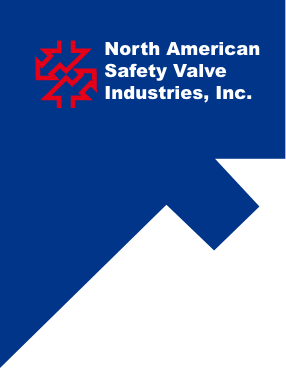Frequently Asked Questions
How can NASVI help me make ordering safety valves and parts easier for me?
To assist you in keeping track of quotes, we can email you a confirmation stating:
■ the description of the valve
■ the price you were quoted
■ any additional information you require
We can even add your reference number to our system. This allows our system to work with yours for fast, convenient ordering.
What if I don’t know exactly what I need?
Remember, when you use NASVI you don’t have to be an expert in safety valves. That’s our job. In fact, that’s our only job!
Email us a photo of the part you need. We’ll ID it for you and get you a quote. If necessary, we will cross reference what you need with another manufacturer for a perfect substitution.
How does your real-time inventory work?
Our system monitors all inventory in our 100,000-sq. ft. warehouse. This technology allows our salespeople to give you real-time information on availability, price and delivery. No waiting. No factory delays.
What are the pressure relief valve installation instructions?
Pre-Installation Handling
Pressure relief valves are designed to protect equipment from overpressure. The valve should be handled with care, not subject to heavy shock loads, and protected to prevent dirt from getting inside. Failure to do so could result in property damage or serious injury to personnel.
Installation
- Mount the valve in a vertical position so that the valve body is self-draining. If a body drain port is provided, make sure it is open when required by the ASME code. Do not plug any bonnet vent openings. The inlet piping should be as short as possible, with no elbows, and equal to or greater than the size of the pressure relief valve inlet connection. This will help limit the inlet pressure drop to 3% or less when the valve is relieving.
- When discharge piping is connected to valve outlet, make sure it is self-draining when a body drain port is not used. The valve should not be connected to any discharge pipe that contains pressure before the valve opens or to any pipe where the pressure build-up is greater than 10% of the set pressure when the valve is open and relieving. Discharge piping other than a short tailpipe must be supported by something other than the valve. For steam service, a drip pan elbow or flexible connection between the valve and the pipe should be used to prevent excessive pipe stress, due to thermal expansion, from being imposed on the valve body.
- For threaded valves, apply a small amount of pipe thread sealing compound to external threads only. Do not put any sealing compound on the first thread or any internal threads. To do so may cause the sealing compound to enter the valve and cause seat leakage. Use wrench flats provided to tighten the valve to the connecting pipe. Do not use the valve body or bonnet and do not over-tighten. To do so may cause valve leakage.
- For flanged valves, use new gaskets and tighten the mounting studs evenly.
Operation
- Maintain a system operating pressure at least 5 psig or 10% below the set pressure of the valve – whichever is greater. Operating too close to the valve set pressure will cause seat leakage and will shorten the time between valve maintenance.
- Do not use the safety valve as a control valve to regulate system operating pressure. Excessive operation will cause the seat to leak and will require more frequent valve maintenance.
- ASME Code-stamped valves equipped with lift levers are designed to be operated only when the system pressure is 75% of the set pressure or greater. When hand operating the valve, hold it open long enough to purge any foreign matter from the seat area. If a cable or wire is attached to the lift lever for remote actuation, make sure the direction of pull is the same as it would be if the lever were pulled directly by hand.
Maintenance
Maintenance should be performed on a regular basis. We recommend an initial inspection interval of 12 months. Depending on the service conditions and the condition of the valve, the suggested inspection interval may decrease or increase.
